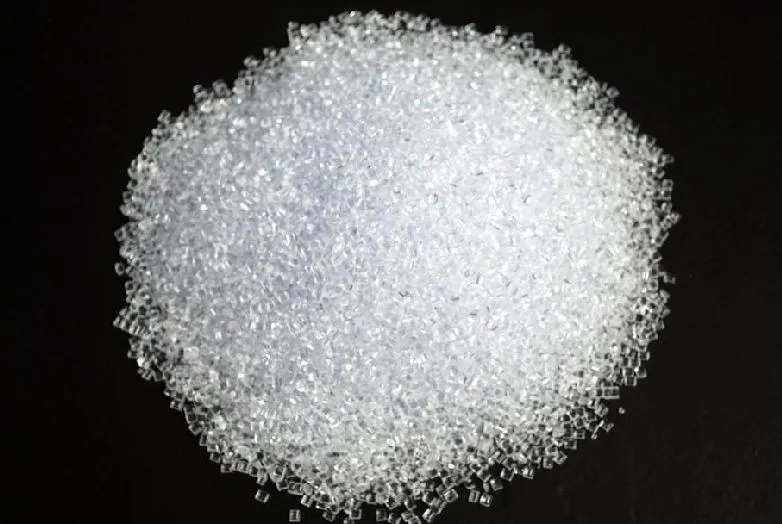Plastic additives are compounds that must be added to polymers (synthetic resins) to improve their processing properties or to improve the performance of the resin itself.

For example, in order to reduce the molding temperature of polyvinyl chloride resin, so that the products are soft and added plasticizer. Another example is to prepare light weight, vibration resistance, heat insulation, sound insulation foam and to add foaming agents. The thermal decomposition temperature of some plastics is very close to the molding process temperature, without the addition of heat stabilizers can not be molded. Therefore, plastic additives in the plastic molding process occupies a particularly important position. Plastic additives can be divided into three categories according to the use when added.
(1)Cost reduction: It can be divided into organic filler and inorganic filler. Commonly used inorganic fillers are CaCO3, talcum powder, wollastonite, BaSO4, kaolin, yuanming powder, glass beads, etc. Commonly used organic fillers are mainly wood powder, bamboo powder, fruit shell powder, shell powder and cotton, hemp and rice agricultural by-products powder, etc.
(2) Enhanced fillers: the most commonly used enhanced fillers are of two types: fiber and whisker type. Mainly: inorganic class (such as glass fiber, carbon fiber, graphite fiber, whisker, quartz fiber and ceramic fiber, etc.); organic class (such as PA fiber, aramid fiber, polyester fiber, ultra-high molecular weight polyethylene fiber, etc.).
(3) Toughened fillers: The toughness of plastics is often expressed in terms of the size of their impact strength values. Impact strength is the work consumed per unit area when the specimen is damaged by impact fracture. It is used to evaluate the ability of the material to resist external impact or to determine the degree of brittleness or toughness of the material. How to choose additives? Plastic formulation design seems simple on the surface, but in fact contains many intrinsic links, in order to design a high-performance, easy to process, low-cost formulations, the selection of additives need to consider many factors, according to the purpose to achieve the selection of appropriate varieties of additives, the additives added should be able to give full play to its expected effectiveness and meet the specified indicators. Additives 12 performance of the specific range of choices are as follows: 1) toughening – choose elastomers, thermoplastic elastomers and rigid toughening materials; 2) enhancements – choose glass fibers, carbon fibers, whiskers and organic fibers; 3) flame retardant –bromine (ordinary bromine system and environmental protection bromine system), phosphorus, nitrogen, nitrogen / phosphorus composite intumescent flame retardants, antimony trioxide, hydrated metal hydroxide; 4) antistatic – all kinds of antistatic agents; 5) conductive – -Carbon (carbon black, graphite, carbon fiber, carbon nanotubes), metal fiber and metal powder, metal oxides; 6) magnetic – ferrite magnetic powder, rare earth magnetic powder including samarium cobalt class (SmCo5 or Sm2Co17), neodymium iron boron class (NdFeB), samarium iron nitrogen class (SmFeN ), aluminum-nickel; 7) thermal conductivity – metal fibers and metal powders, metal oxides, nitrides and carbides; carbon materials such as carbon black, carbon fibers, graphite and carbon nanotubes; semiconductor materials such as silicon, boron; 8) heat resistance – glass fibers, inorganic fillers (9) heat-resistant agents such as the replacement of maleimide class and β crystal nucleating agent; 9) transparent – nucleating agent, for PP α crystal nucleating agent of sorbitol series has the best effect; 10) wear-resistant – graphite, molybdenum disulfide, copper powder and other cobalt magnetic powder three categories 11) insulation –calcined kaolin; 12) barrier – mica, montmorillonite, quartz, etc. Additive particle size ① additives particle size on mechanical properties: the smaller the particle size, the more beneficial to the tensile strength and impact strength of the filler material; ② additives particle size on flame retardant properties: the smaller the particle size of the flame retardant, the better the flame retardant effect. For example, the smaller the particle size of hydrated metal oxides and antimony trioxide, the less the amount added to achieve the same flame retardant effect; ③ additives particle size on the impact of color matching: the smaller the particle size of colorants, the higher the coloring power, the stronger the coverage, the more uniform color; ④ additives particle size on the impact of electrical conductivity: carbon black, for example, the smaller the particle size, the easier it is to form a network of conductive pathways to achieve the same conductive effect to reduce the amount of carbon black . However, as with colorants, particle size also has a limit, the particle size is too small and easy to gather and difficult to disperse, the effect is not good.
*Disclaimer: The content contained in this article comes from the Internet, WeChat public numbers and other public channels, and we maintain a neutral attitude toward the views expressed in the article. This article is for reference and exchange only. The copyright of the reproduced manuscript belongs to the original author and the institution, and if there is any infringementPlease contact Jetson Chemical for deletion
